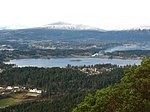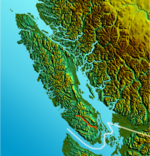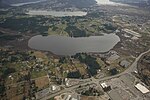Quamichan Lake (Raven Field) Water Aerodrome
British Columbia airport stubsCowichan ValleyRegistered aerodromes in British ColumbiaSeaplane bases in British Columbia
Quamichan Lake (Raven Field) Water Aerodrome (TC LID: CRF6) is located on Quamichan Lake, 2.9 nautical miles (5.4 km; 3.3 mi) north northeast of Duncan, British Columbia, Canada. The airfield is owned and operated by John F Howroyd, who also owns Quamichan Lake (Raven Field) Airport.
Excerpt from the Wikipedia article Quamichan Lake (Raven Field) Water Aerodrome (License: CC BY-SA 3.0, Authors).Quamichan Lake (Raven Field) Water Aerodrome
Stamps Road,
Geographical coordinates (GPS) Address Nearby Places Show on map
Geographical coordinates (GPS)
| Latitude | Longitude |
|---|---|
| N 48.808333333333 ° | E -123.65 ° |
Address
Quamichan Lake Airport (Raven Field)
Stamps Road
V9L 5S1
British Columbia, Canada
Open on Google Maps






